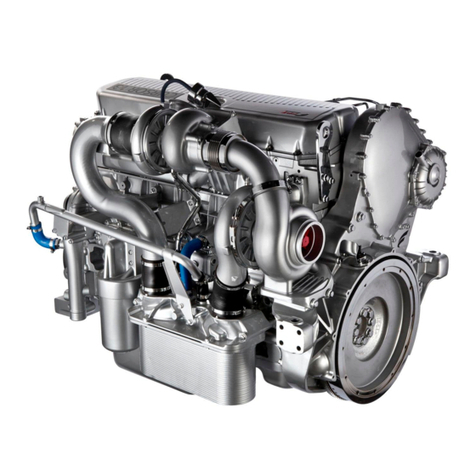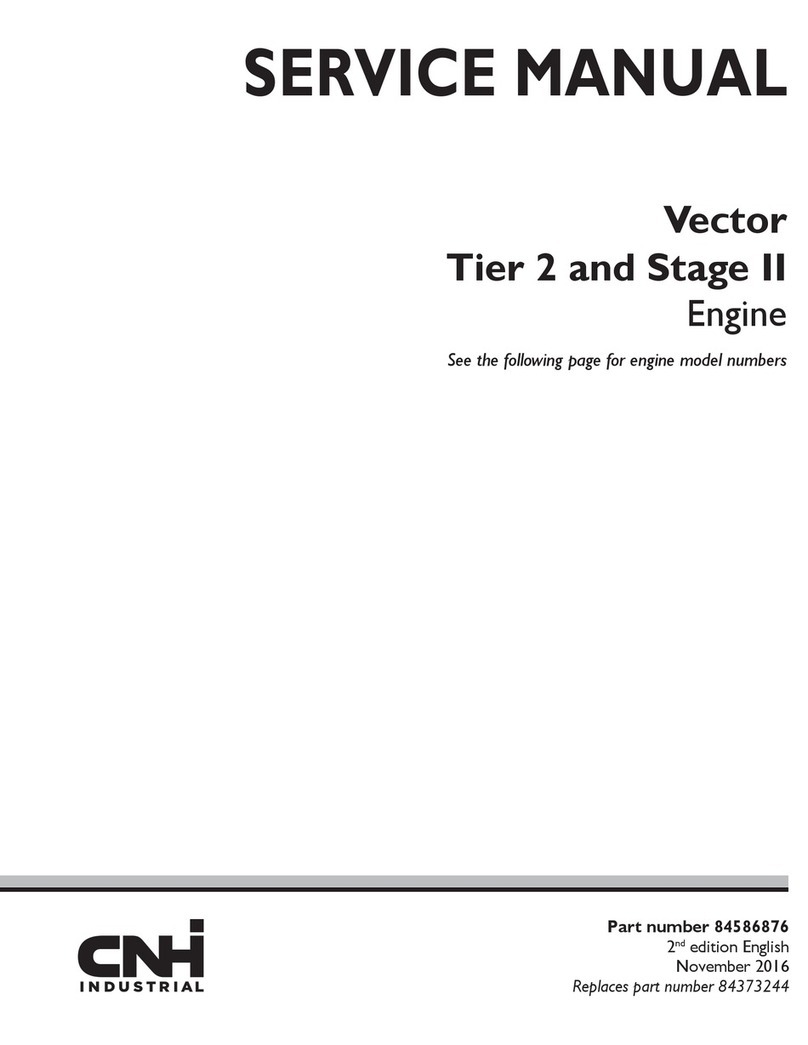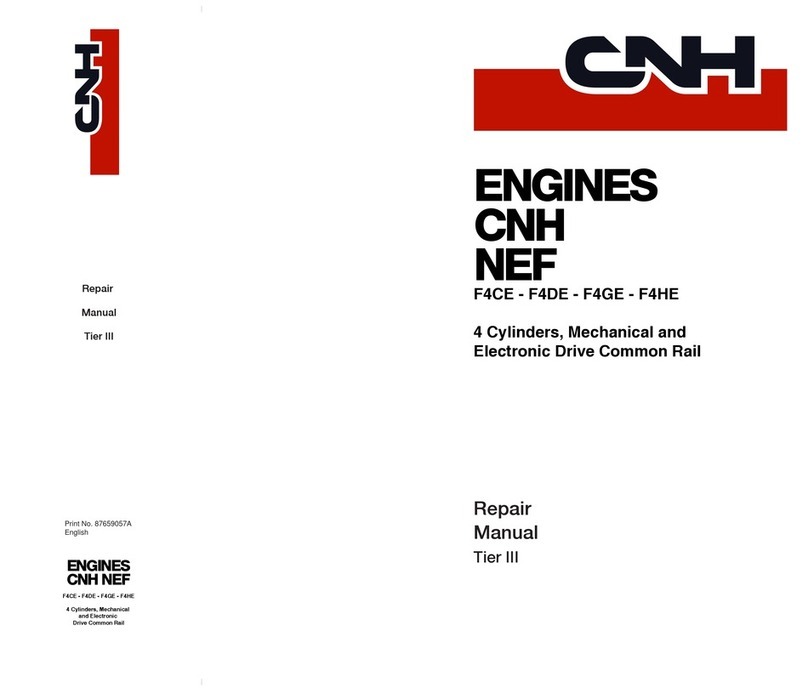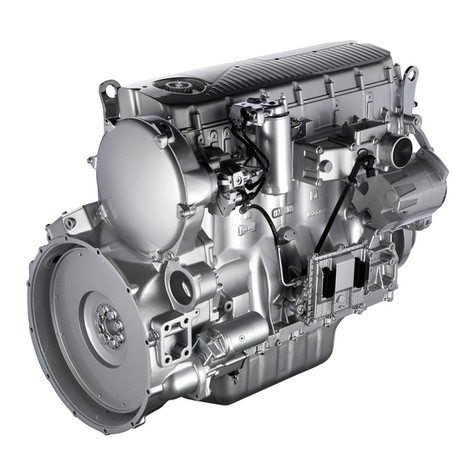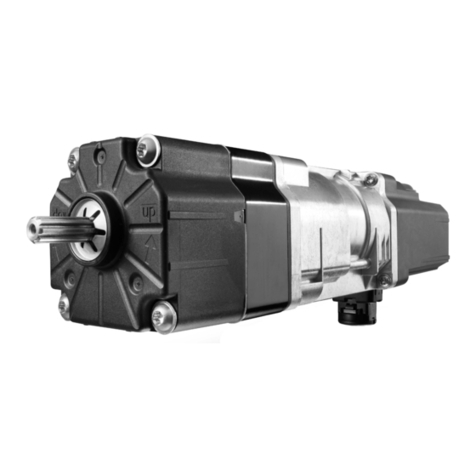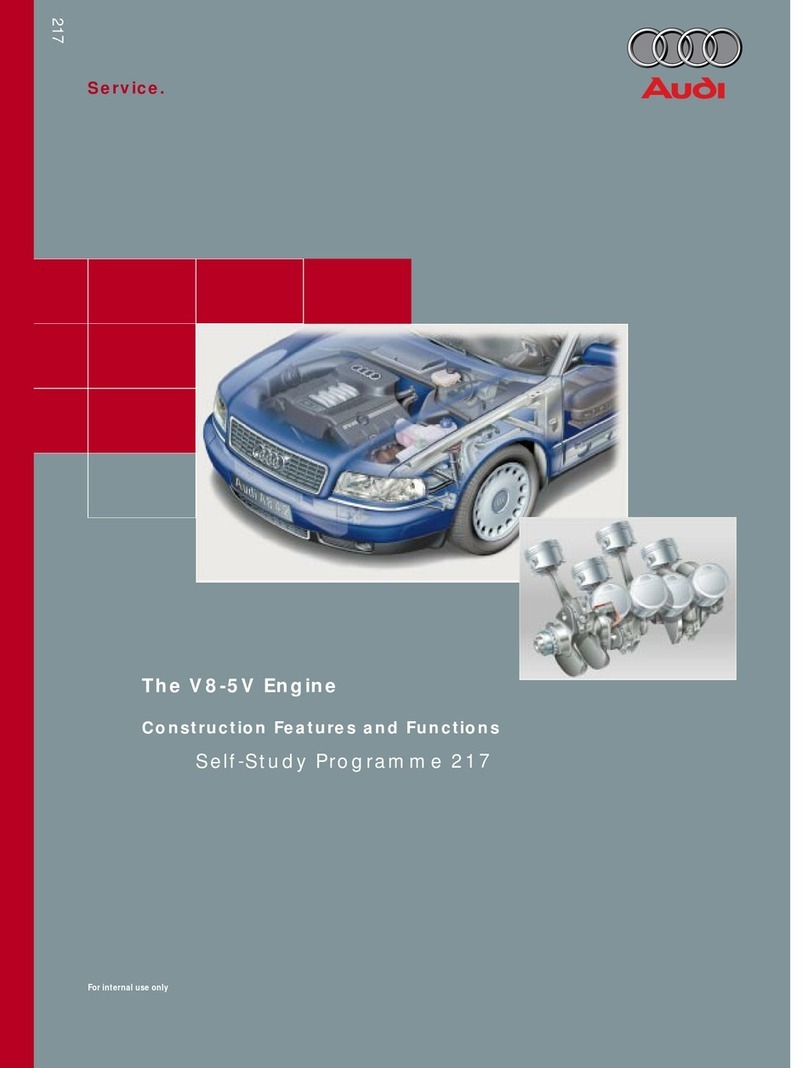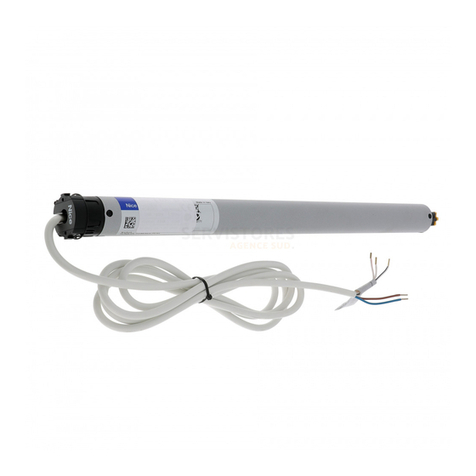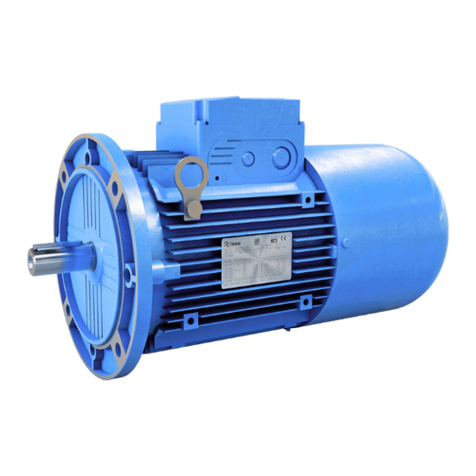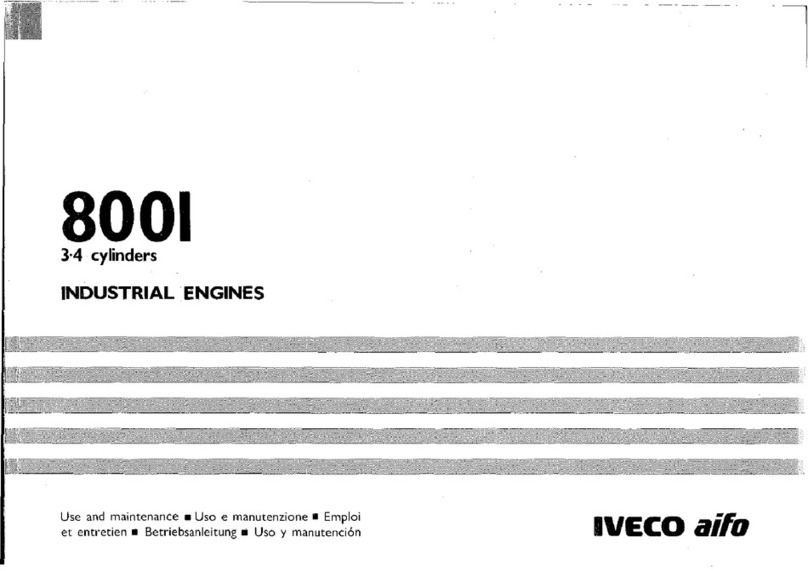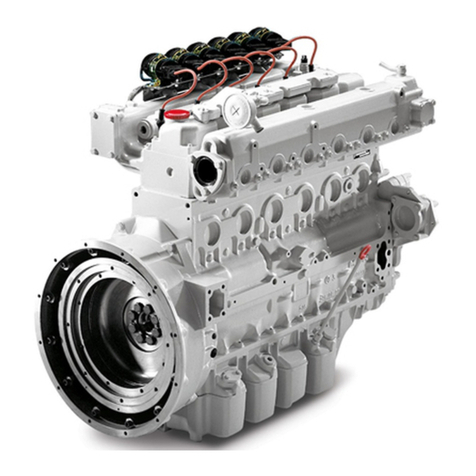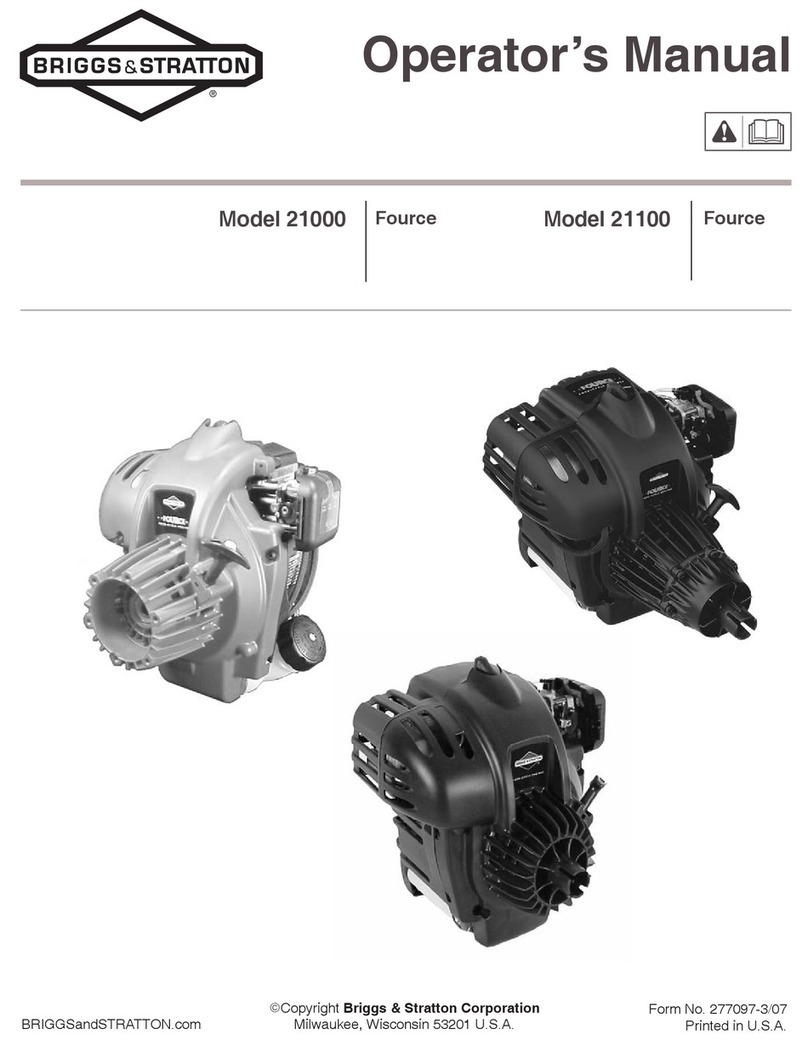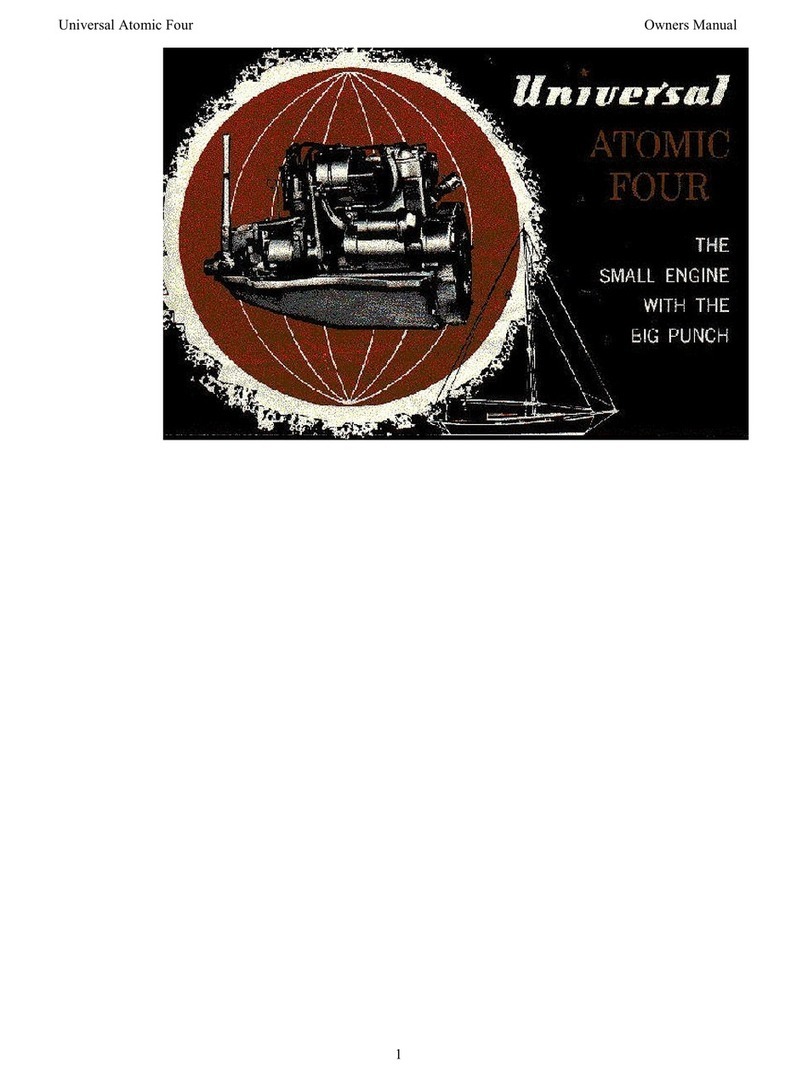CNH F5C Operating instructions

ENGINES
CNH
F5C - F5A
Structural and Non Structural Version
4 Cylinders, Mechanical
ENGINES
CNH
F5C - F5A
Structural and
Non Structural Version
Repair
Manual
Tier III
Print No. 87736548A
English
Repair
Manual
Tier III

REPAIR INSTRUCTION MANUAL
CNH ENGINES
ENGINES FAMILY:
F5AE9484 -- F5AE9454 -- F5CE9484 -- F5CE9454 -- F5CE5454
All the information, illustrations and data provided by this manual are based upon the most recent information available
at the time of its publication.
CNH ITALIA S.p.A. reserves the right to implement modifications, at any time, without communications.
CNH ITALIA S.p.A.
STAMPATO N. 87736548A
Edizione -- October 2007


-This Manual is written for an expert technician to
provide the technical information required to per-
form repair operations on this machine.
-Please read carefully this manual for the correct
information regarding the repair procedures.
-For any question or comment, or in case any
error regarding the content of this manual is
found, you are asked to please contact:
CNH ITALIA S.p.A.
Strada Settimo, 323
San Mauro Torinese (TO)
10099 ITALIA
PARTS & SERVICE
Fax ++39 011 0077357
TO THE READER
SYMBOLS
This manual includes safety warning symbols and indications to recall the attention on possible personal
injuries or damages to the machine.
This symbol recalls the attention to points relative to safety.
When you see this symbol, it is necessary to proceed with attention since there is the possibility of
personal injuries.
Comply scrupulously with the precautions identified by this symbol.
The safety warning symbol is also used to attract attention to the weight of a component or a part.
To prevent personal injuries or damages, make sure that the appropriate lifting equipment and
techniques are implemented when handling heavy loads.
!
IN--1
FOREWORD

UNITS OF MEASURE
In this manual, the units of measure of the IS (International System) are used.
The units of measure of the MKSA system are listed in parenthesis after the units of the International system.
Example: 24.5 Mpa (250 kgf/cm2).
Here below, a conversion table of the units of the IS and some units of measure of other systems is listed. as
a reference.
IN--2
FOREWORD
Quantity
To convert
from
(SI)
into
(Others)
Multiply
by Quantity
To convert
from
(SI)
into
(Others)
Multiply
by
L
e
n
g
t
h
mm in 0.03937
P
r
e
s
s
u
r
e
MPa kgf/cm210.197
L
eng
t
h
mm ft 0.003281
P
ressure MPa psi 145.0
LUS gal 0.2642
P
o
w
e
r
kW PS 1.360
Volume LUS qt 1.057
P
ower kW HP 1.341
m3yd31.308 Temperature °C°F°C x 1.8 + 32
Mass kg lb 2.205
V
e
l
o
c
i
t
y
km/h mph 0.6214
F
o
r
c
e
Nkgf 0.10197
V
e
l
oc
i
t
ymin-- 1 rpm 1.0
F
orce Nlbf 0.2248
F
l
o
w
L/min US gpm 0.2642
T
o
r
q
u
e
N.m kgf.m 0.10197
F
l
ow mL/rev cc/rev 1.0
T
orque N.m lbf.ft 0.7375

Diagrams and symbols have been widely used to give a clearer and more immediate illustration of the subject being dealt with, (see
next page) instead of giving descriptions of some operations or procedures.
Example
Ø 1 = housing for connecting rod small end bush
Ø 2 = housing for connecting rod bearings
α
Tighten to torque
Tighten to torque + angular value
1
∅
∅2
3
F5 ENGINES
SPECIAL REMARKS

4F5 ENGINES
UPDATING
Section Description Page Date of revision

INTRODUCTION 1
F5 ENGINES
Introduction
Page
PREFACE TO USER’S GUIDELINE MANUAL 3....
SYMBOLS 3...............................
-Warnings 3.............................
-Service operations 3......................
GENERAL WARNINGS 5.....................
GENERAL WARNINGS
ON THE ELECTRIC SYSTEM 7...............
-Bonding and screening 8...................
OPTIONAL ELECTRICAL AND MECHANICAL
PARTS INSTALLATIONS 9..................

2INTRODUCTION F5 ENGINES

Manuals for repairs are split into Parts and Sections, each one of which is marked by a numeral; the contents of these sections are
indicated in the general table of contents.
The sections dealing with things mechanic introduce the specifications, tightening torque values, tool lists, assembly
detaching/reattaching operations, bench overhauling operations, diagnosis procedures and maintenance schedules.
The sections (or parts) of the electric/electronic system include the descriptions of the electric network and the assembly’s
electronic systems, wiring diagrams, electric features of components, component coding and the diagnosis procedures for the
control units peculiar to the electric system.
Section 1 describes the engines illustrating its features and working in general.
Section 2 describes the type of fuel feed.
Section 3 relates to the specific duty and is divided in four separate parts:
1. Mechanical part, related to the engine overhaul, limited to those components with different characteristics based on the relating
specific duty.
2. Electrical part, concerning wiring harness, electrical and electronic equipment with different characteristics based on the relating
specific duty.
3. Maintenance planning and specific overhaul.
4. Troubleshooting part dedicated to the operators who, being entitled to provide technical assistance, shall have simple and direct
instructions to identify the cause of the major inconveniences.
Sections 4 and 5 illustrate the overhaul operations of the engine overhaul on stand and the necessary equipment to execute such
operations.
The appendix contains a list of the general safety regulations to be respected by all installation and maintenance engineers in order
to prevent serious accidents taking place.
The manual uses proper symbols in its descriptions; the purpose of these symbols is to classify contained information. In particular,
there have been defined a set of symbols to classify warnings and a set for assistance operations.
General danger
It includes the dangers of above described signals.
Danger of serious damage for the assembly
Failure to comply, both fully or in part, with such prescriptions will involve serious damage to the assembly and may
sometimes cause the warranty to become null and void.
Environment protection
Moreover, it describes the correct actions to be taken to ensure that the assembly is used in such a way so as to protect
the environment as much as possible.
Danger for persons
Missing or incomplete observance of these prescriptions can cause serious danger for persons’ safety.
SYMBOLS - Warnings
It indicates an additional explanation for a piece of information.
!
NOTE
PREFACE TO USER’S GUIDELINE MANUAL
Service operations
Example
Ø 1 = housing for connecting rod small end bush
Ø 2 = housing for connecting rod bearings
α
Tighten to torque
Tighten to torque + angular value
1
∅
∅2
INTRODUCTION 3
F5 ENGINES

4INTRODUCTION F5 ENGINES
Removal
Disconnection Intake
Refitting
Connection Exhaust
Removal
Disassembly Operation
Fitting in place
Assembly ρCompression ratio
Tighten to torque Tolerance
Weight difference
α
Tighten to torque + angle value Rolling torque
Press or caulk Rotation
Regulation
Adjustment
Angle
Angular value
!Warning
Note Preload
Visual inspection
Fitting position check Number of revolutions
Measurement
Value to find
Check
Temperature
Equipment bar Pressure
Surface for machining
Machine finish
Oversized
Higher than….
Maximum, peak
Interference
Strained assembly
Undersized
Less than….
Minimum
Thickness
Clearance
Selection
Classes
Oversizing
Lubrication
Damp
Grease
Temperature < 0 °C
Cold
Winter
Sealant
Adhesive
Temperature > 0 °C
Hot
Summer
Air bleeding

GENERAL WARNINGS
Warnings shown cannot be representative of all danger situations possibly occurring. Therefore, it is suggested to contact
immediate superiors where a danger situation occurs which is not described.
Use both specific and general-purpose toolings according to the prescriptions contained in respective use and
maintenance handbooks. Check use state and suitability of tools not subjected to regular check.
The manual handling of loads must be assessed in advance because it also depends, besides weight, on its size and on
the path.
Handling by mechanical means must be with hoisters proper as for weight as well as for shape and volume. Hoisters,
ropes and hooks used must contain clear indications on maximum carrying capacity acceptable. The use of said means
is compulsorily permitted to authorised personnel only. Stay duly clear of the load, and, anyhow, never under it.
In disassembling operations, always observe provided prescriptions; prevent mechanical parts being taken out from
accidentally striking workshop personnel.
Workshop jobs performed in pairs must always be performed in maximum safety; avoid operations which could be
dangerous for the co-operator because of lack of visibility or of his/her not correct position.
Keep personnel not authorised to operations clear of working area.
You shall get familiar with the operating and safety instructions for the assembly prior to operating on the latter. Strictly
follow all the safety indications found on the assembly.
Do not leave the running assembly unattended when making repairs.
When carrying out work on the assembly lifted off the ground, verify that the assembly is firmly placed on its supporting
stands, and that the manual/automatic safety devices have been actuated in the event that the assembly is to be lifted
by means of a hoist.
When you have to operate on assemblies powered by natural gas, follow the instructions contained in the document,
as well as all the specific safety standards provided for.
Only remove radiator cap when the engine is cold by cautiously unscrewing it in order to let system residual pressure
out.
Inflammable fuel and all inflammable fluids and liquids must be handled with care, according to what contained on harmful
materials 12-point cards. Refuelling must be performed outdoors with the engine off, avoiding lit cigarettes, free flames
or sparks in order to prevent sudden fires/bursts. Adequately store inflammable, corrosive and polluting fluids and liquids
according to what provided by regulations in force. Compulsorily avoid to use food containers to store harmful liquids.
Avoid to drill or bore pressurised containers, and throw cloths impregnated with inflammable substances into suitable
containers.
Worn out, damaged or consumable parts must be replaced by original spares.
During workshop activity, always keep the work place clean; timely clear or clean floors from accidental liquid or oil spots.
Electric sockets and electric equipment necessary to perform repair interventions must meet safety rules.
!
INTRODUCTION 5
F5 ENGINES

Clean the assemblies and carefully verify that they are intact prior to overhauling. Tidy up detached or disassembled
parts with their securing elements (screws, nuts, etc.) into special containers.
Check for the integrity of the parts which prevent screws from being unscrewed: broken washers, dowels, clips, etc.
Self-locking nuts with an insert made of nylon must always be replaced.
Avoid contact of rubber parts with diesel oil, petrol or other not compatible substances.
Before washing under pressure mechanical parts, protect electric connectors, and central units, if present.
Tightening screws and nuts must always be according to prescriptions; CNH commercial and assistance network is
available to give all clarifications necessary to perform repair interventions not provided in this document.
Before welding:
-Disconnect all electronic central units, take power cable off battery positive terminal (connect it to chas-
sis bonding) and detach connectors.
-Remove paint by using proper solvents or paint removers and clean relevant surfices with soap and
water.
-Await about 15 minutes before welding.
-Equip with suitable fire resistant protections to protect hoses or other components where fluids or other
materials flow which may catch fire easily on welding.
Should the vehicle be subjected to temperatures exceeding 80°C (dryer ovens), disassemble drive electronic central
units.
The disposal of all liquids and fluids must be performed with full observance of specific rules in force.
Put on, where required by the intervention, garments and protections provided in accident prevention rules; contact
with moving parts can cause serious injuries. Use suitable, preferably tight-fitted garments, and avoid to use jewels,
scarves, etc.
Do not leave the engine in motion at workshop locations not provided with a pipe to scavenge exhaust gas outside.
Avoid to breathe fumes coming from heating or from paint welding because they can cause damages to health; operate
outdoors or in suitably ventilated areas. Put on proper inspirator if paint powder is present.
Avoid contact with hot water or steam coming from the engine, radiator and pipings because they could cause serious
burns. Avoid direct contact with liquids and fluids present in vehicle systems; where an accidental contact has occurred,
refer to 12-point cards for provisions to make.
6INTRODUCTION F5 ENGINES

GENE
R
AL
W
A
R
NINGS ON THE ELECT
R
IC S
Y
STEM
To start up the engine, do not use fast chargers. Start up must only be performed with either separate batteries or special
truck.
A wrong polarisation of supply voltage in drive electronic central units (for instance, a wrong polarisation of batteries)
can cause them to be destroyed.
Disconnect the batteries from the system during their recharging with an external apparatus.
On connecting, only screw up connector (temperature sensors, pressure sensors etc.) nuts at prescribed tightening
torque.
Before disconnecting the junction connector from an electronic central unit, isolate the system.
Do not directly supply electronic central units servo components at nominal vehicle voltage.
Cables must be arranged such as to result to be parallel to reference plane, i.e. as close as possible to chassis/body
structure.
Once the intervention on the electric system has been completed, recover connectors and wiring harnesses according
to original arrangement.
If an intervention has to be made on the electric/electronic system, disconnect batteries from the system; in this case,
always disconnect, as a first one, the chassis bonding cable from batteries negative terminal.
Before connecting the batteries to the system, make sure that the system is well isolated.
Disconnect the external recharging apparatus from the public utility network before taking apparatus pins off battery
terminals.
Do not cause sparks to be generated in checking if the circuit is energised.
Do not use a test lamp in checking circuit continuity, but only use proper control apparatuses.
Make sure that the electronic devices wiring harnesses (length, lead type, location, strapping, connection to screening
braiding, bonding, etc.) comply with CNH system and are carefully recovered after repair or maintenance interventions.
Measurements in drive electronic central units, plugged connections and electric connections to components can only
be made on proper testing lines with special plugs and plug bushes. Never use improper means like wires, screwdrivers,
clips and the like in order to avoid the danger of causing a short circuit, as well as of damaging plugged connections, which
would later cause contact problems.
Connectors present must be seen from cable side. Connectors views contained in the manual are representative of cable
side.
!
NOTE
INTRODUCTION 7
F5 ENGINES

8INTRODUCTION F5 ENGINES
Bonding and screening
Negative leads connected to a system bonded point must be both as short and possible and “star“-connected to each other, trying
then to have their centering tidily and properly made (Figure 1, re. M).
Further, following warnings are to be compulsorily observed for electronic components:
- Electronic central units must be connected to system bonding when they are provided with a metallic shell.
- Electronic central units negative cables must be connected both to a system bonding point such as the dashboard opening
bonding (avoiding “serial“ or “chain“ connections), and to battery negative terminal.
- Analog bonding (sensors), although not connected to battery negative system/terminal bonding, must have optimal isolation.
Consequently, particularly considered must be parasitic resistances in lugs: oxidising, clinching defects, etc.
- Screened circuits braiding must only electrically contact the end towards the central unit entered by the signal (Figure 2).
- If junction connectors are present, unscreened section d, near them, must be as short as possible (Figure 2).
- Cables must be arranged such as to result to be parallel to reference plane, i.e. as close as possible to chassis/body structure.
1. NEGATIVE CABLES “STAR“CONNECTION TO SYSTEM BONDING M
2. SCREENING THROUGH METALLIC BRAIDING OF A CABLE TO AN ELECTRONIC COMPONENT — C. CONNECTOR
d. DISTANCE !0
88039
Figure 1
Figure 2

INTRODUCTION 9
F5 ENGINES
OPTIONAL ELECTRICAL AND MECHANICAL PARTS INSTALLATIONS
Assemblies shall be modified and equipped with additions - and their accessories shall be fitted - in accordance with the assembling
directives issued.
It is reminded that, especially about the electric system, several electric sockets are provided for as series (or optional) sockets in
order to simplify and normalise the electrical intervention that is care of preparation personnel.
It is absolutely forbidden to make modifications or connections to electric central units wiring harnesses; in particular,
the data interconnection line between central units (CAN line) is to be considered inviolable.

10 INTRODUCTION F5 ENGINES

Section
F5CE Engines Part 1
F5AE Engines Part 2
F5 ENGINES
1
F5 ENGINES

2F5 ENGINES

Thanks very much for your reading,
Want to get more information,
Please click here, Then get the complete
manual
NOTE:
If there is no response to click on the link above,
please download the PDF document first, and then
click on it.
Have any questions please write to me:
admin@servicemanualperfect.com
This manual suits for next models
6
Table of contents
Other CNH Engine manuals
Popular Engine manuals by other brands

Westerbeke
Westerbeke L-25 Operator's manual

Briggs & Stratton
Briggs & Stratton 400400 Series owner's manual
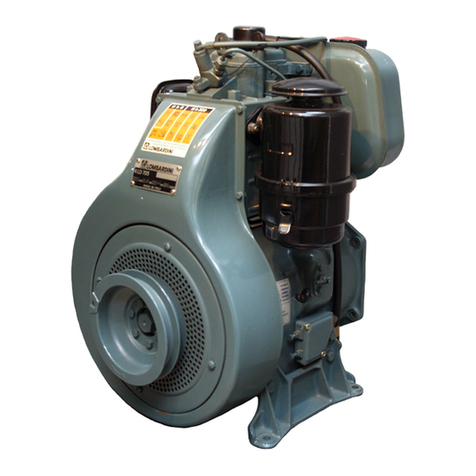
Lombardini
Lombardini 3LD 450 Workshop manual
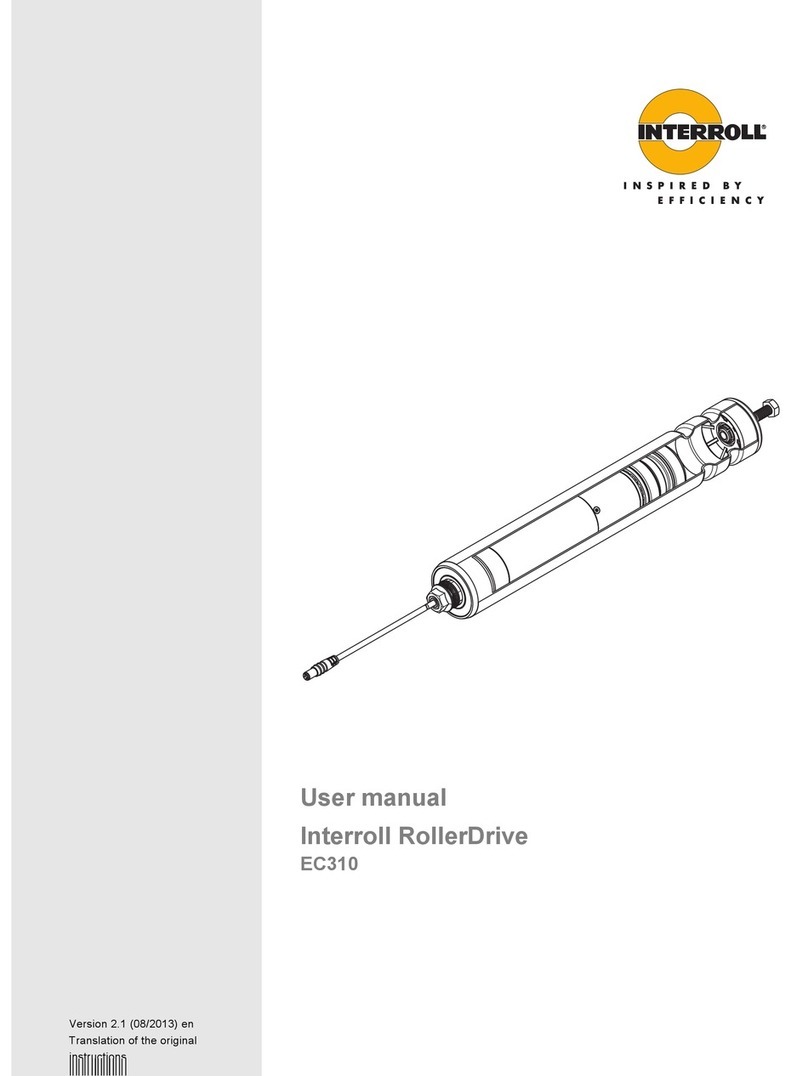
Interroll
Interroll RollerDrive EC310 user manual

Reliance electric
Reliance electric RPM AC Installation, operation and maintenance
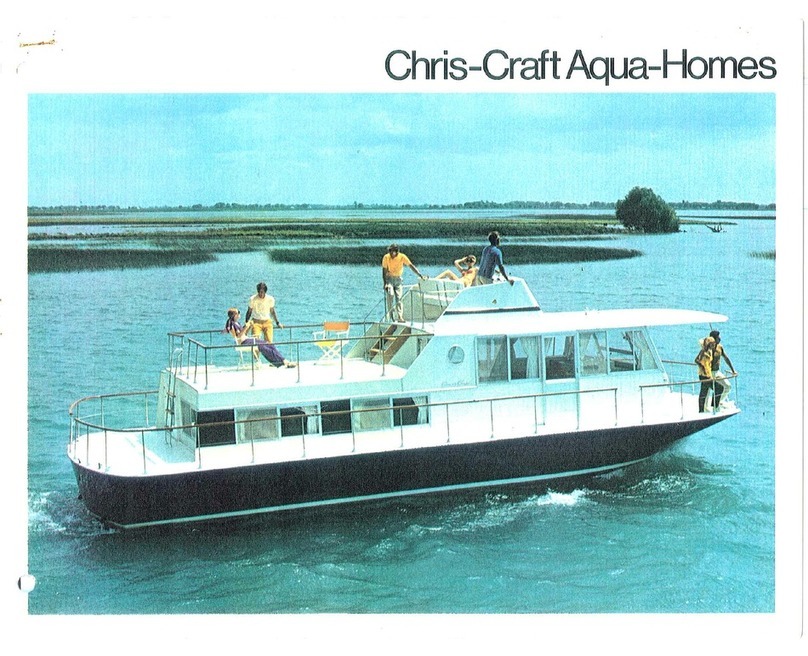
Chris-Craft
Chris-Craft 307-Q owner's manual
